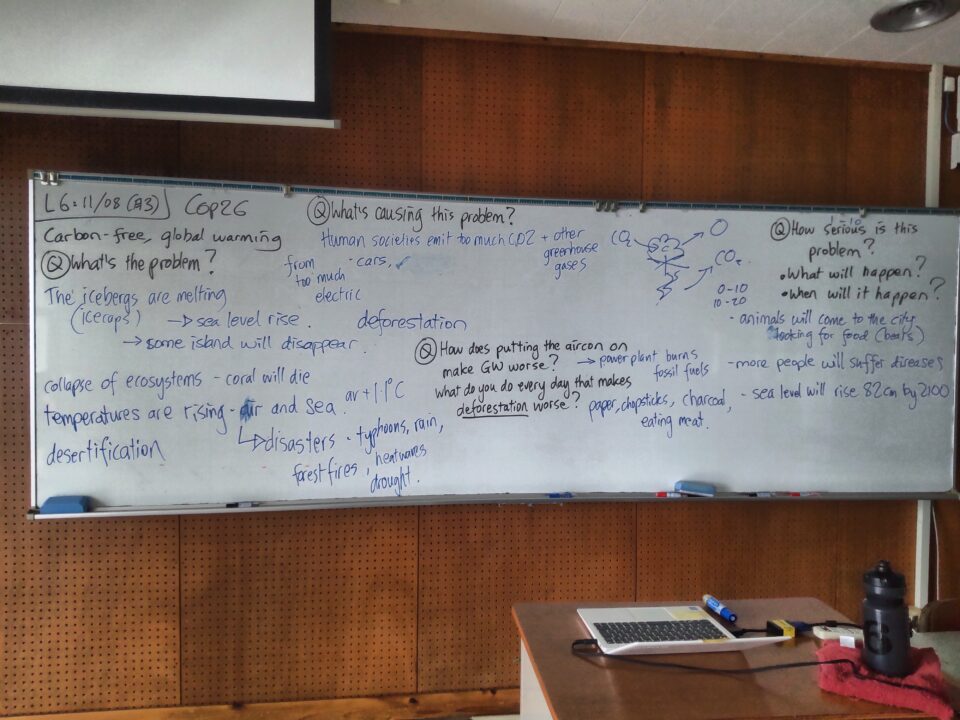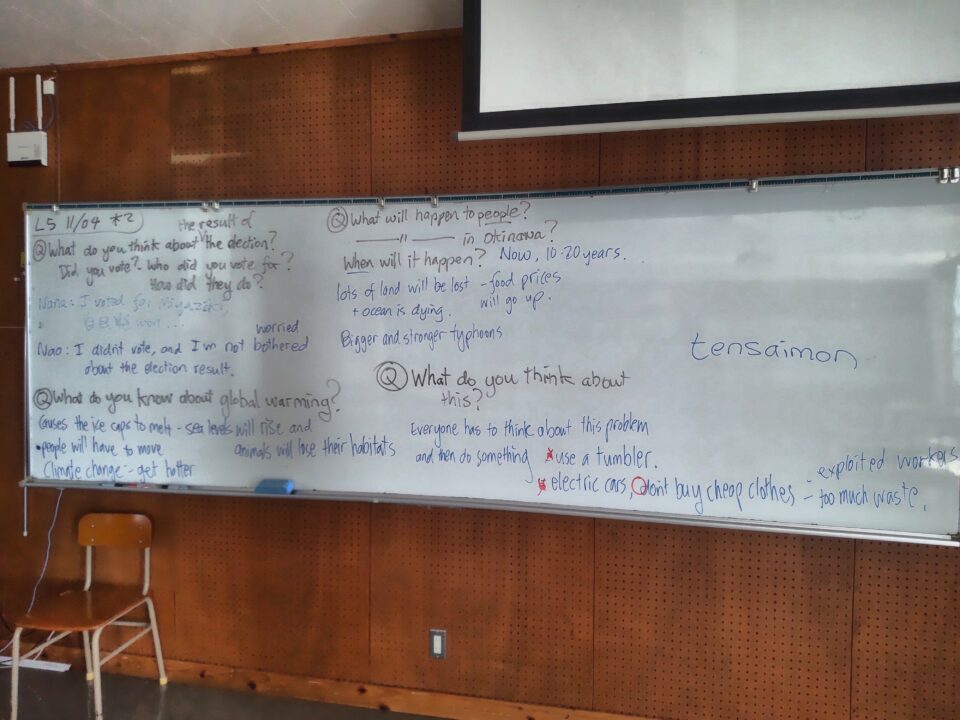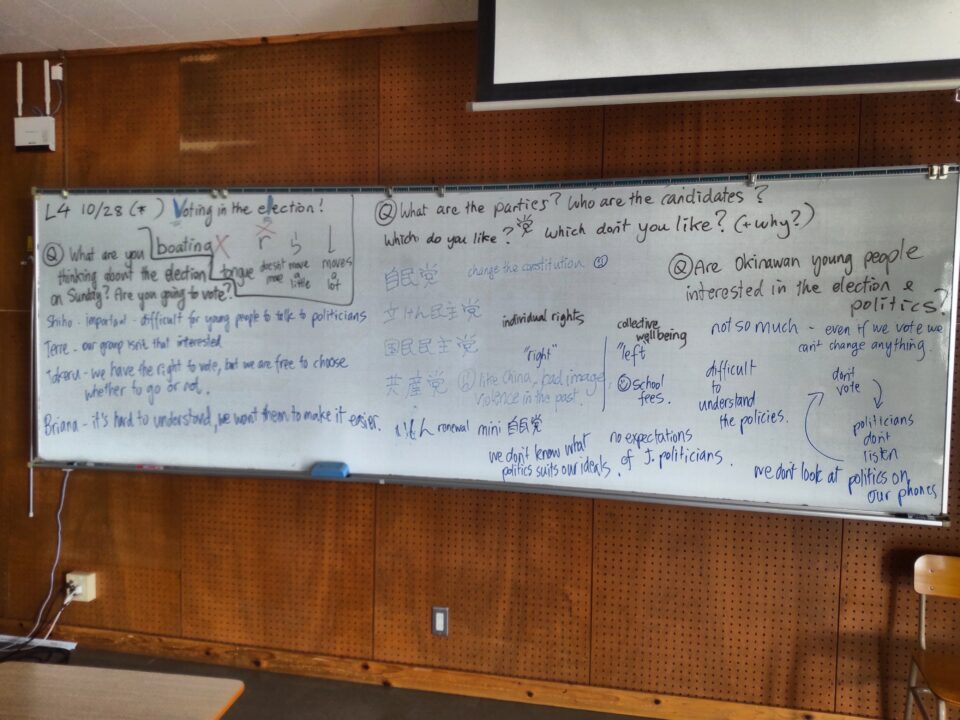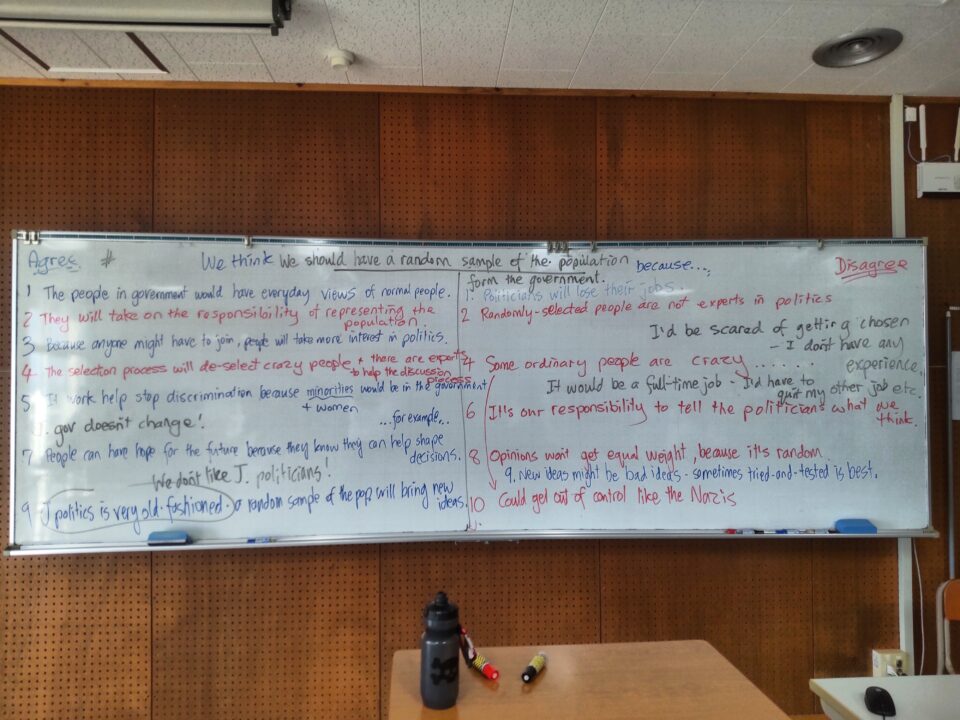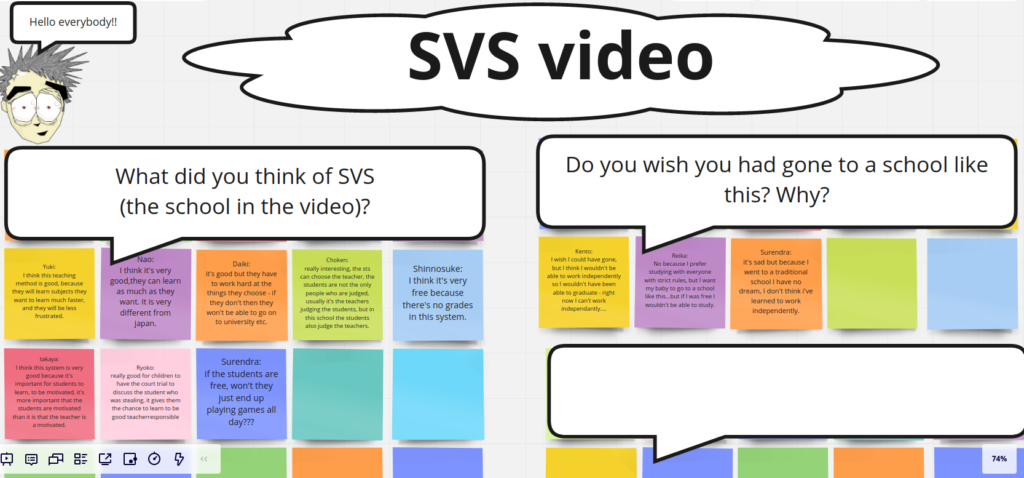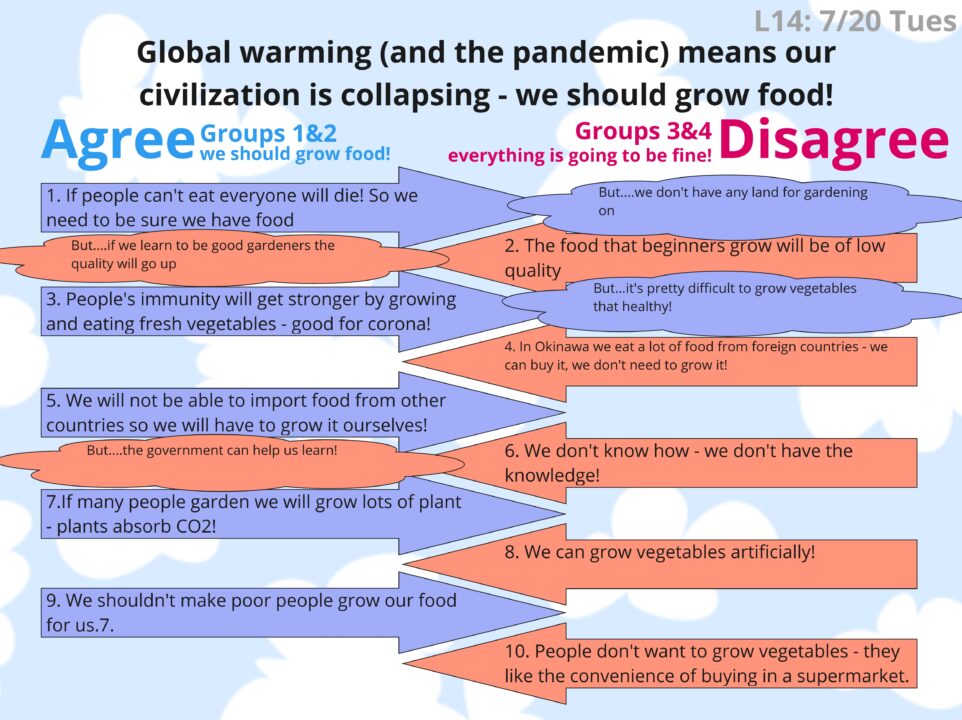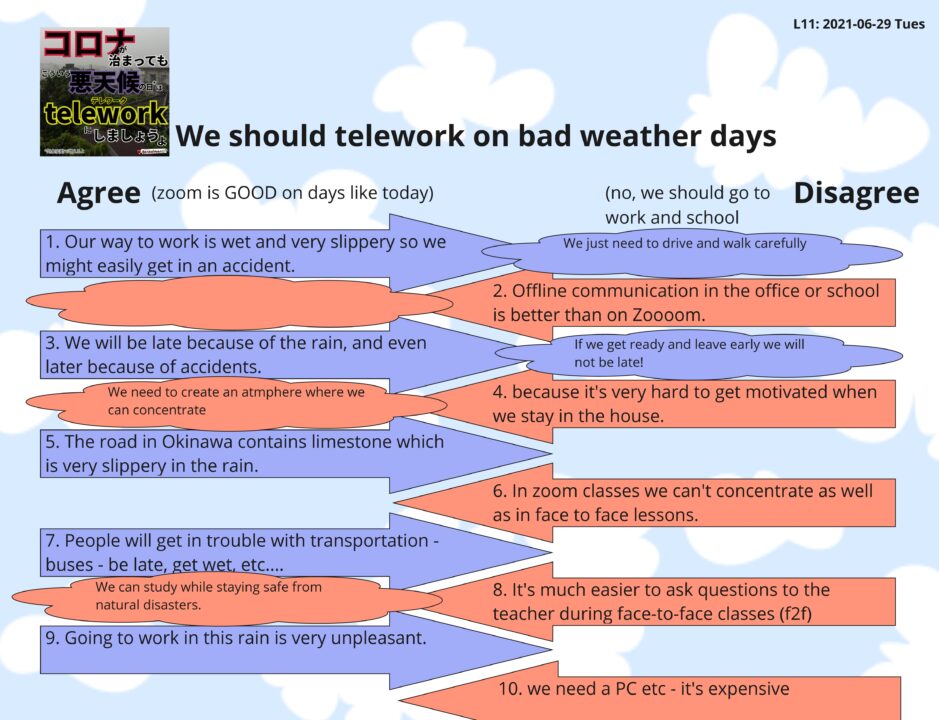I work as a university lecturer teaching English conversation and discussion courses in Japan, and over time I’ve gradually moved away from “talk about your hobbies” to “talk about the state of the world” – I found that my students react well to this, and once they get warmed up very much enjoy talking about important social issues in English.
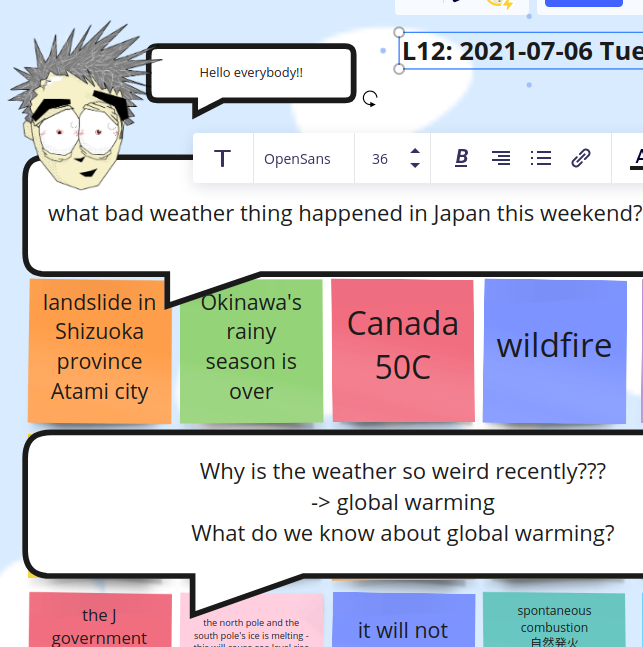
My methodology is very simple so I’m fairly confident any teacher could replicate it:
1) I put a question on the board, something that introduces the topic, for example
“What do you think about the corona vaccines?”
or
“what do you know about global warming?”
I try to choose topics starting from the students’ interests – I start the semester with 3 questions to find out what they are concerned about:
A) What problems do you have in your life?
B) What problems do you see in Okinawa or Japan?
C) What problems do you see in the world?
However I will also sometimes introduce a topic myself, often based on current news events.
2) I then put the students into groups of 4 or so, and give them 5 mins or so to brainstorm, and an extra two minutes to get ready to say something in English.
3) I then hear something from each group, which I scribe to the board.
4) I then step back, take a look at their responses, and add anything I think needs adding from my own knowledge of the topic – sometimes a little more detail, or a real world example, and if necessary any corrections. At this point I often use the projector to show any relevant websites or short clips on YouTube (often stuff I search for on the fly) whilst being careful not to give too much – really I want the students to do as much of the figuring out as possible.
5) I think of a new question, something that moves our discussion deeper into the topic – go to Step 1) and repeat!
Our discussion of any given topic often extends over several lessons, so between lessons I set a homework to look at some internet resources (often video) to deepen the students understanding (whilst simultaneously practicing their English listening of course!)
Occasionally we will also do a debate on a topic – that’s a great fun lesson. The key is lots of thinking time (as we fill out the agree and disagree points on the whiteboard) before we get to the actual debate.
I very much enjoy teaching like this because I feel like it is very student-centered – the students do most of the work, with just a bit of guiding and input from me. This makes it very organic and responsive to their thoughts, which also has the advantage for me that even the same topic is different every time I do it.
Here are a few recent whiteboards to illustrate how our discussions develop (I take a photo the whiteboard every lesson – to share with the students on the school LMS and also as a useful record for me).
I’ve included a few from when teaching on Zooooom – I use exactly the same methodology, using miro.com as a whiteboard. One advantage to zoooom over the classroom is that because I can hear the students clearly in my earphones whilst sitting at the keyboard I can scribe as they are talking (sometimes they talk in Japanese and I scribe it into English in real time) – by contrast in the classroom I have to listen (while looking at the student) then turn around to scribe.
I hope this helps any other teachers who are interested in having discussions of real world events in the classroom. Thanks for reading!
